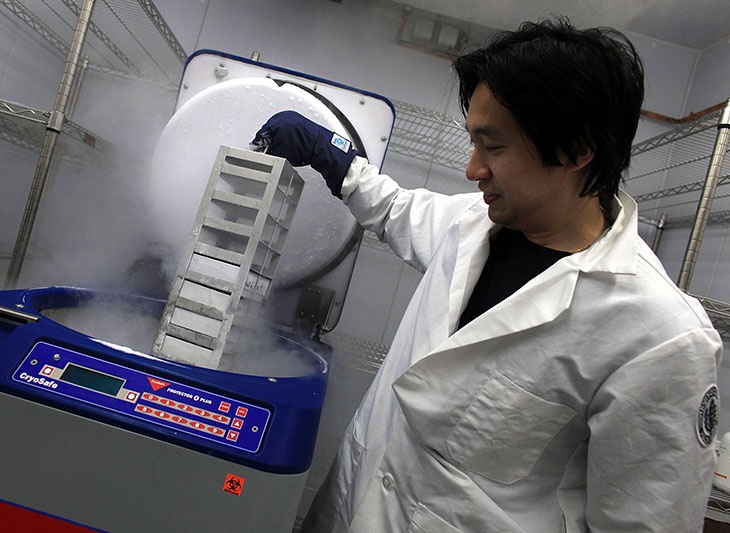APEC Enlists Young Scientists, Media to Ignite Innovation Uptake

Shaped by officials meeting in Boracay over the last week, the initiative aims to help innovators more effectively communicate the practical application of their work. A panel of young scientists and industry media consultants from member economies has been tapped to lead and implement it. The goal is to increase buy-in among the public, policymakers and investors for adapting advancements in science and technology to the production of next generation goods and services, improving trade and growth, employment and people’s quality of life in the region.
“Breakthroughs in fields such as ‘big data’ and the ‘internet of things’ are opening all kinds of new opportunities for entrepreneurship and social development,” said Chen Linhao, Chair of the APEC Policy Partnership on Science, Technology and Innovation, which drives policies in support of market-based innovation and is the initiative’s administrative body. “If people do not understand ‘the next big thing’ or the benefits, the risk is they will simply become missed opportunities—for the public, for businesses and ultimately the experts developing them.”
“Mainstreaming innovation is often as much about marketing an idea as it is the usefulness of it which is something that originators can struggle to get off the ground,” explained Dr Ahmad bin Ibrahim, a Fellow at the Academy of Sciences Malaysia who is overseeing the initiative. “APEC members are enlisting young scientists equipped with technical acumen, vision and connectedness to new media to build a methodology for disseminating complex information that can be easily absorbed whether you are the next Thomas Edison or ‘Joe or Jane off-the-street.’”
Panelists – specialists in natural and social sciences under 40 years of age and within 5-7 years of obtaining their PhD – will test their communication approaches in their respective APEC economy over the next half year. They will draw on guidance offered by science and technology journalists and communications experts during a strategy meeting in Kuala Lumpur. Emphasis is on media messaging, the use of apps and social media, and outreach program development.
The outcomes of the panel’s field work will be examined when they reconvene in September in Kuala Lumpur. Recommendations based on an analysis of the findings will be disseminated to the scientific community in the region to help innovators refine their engagement with non-experts and peers, including those across borders, and prompt increased funding and policy support for research and development.
“As we map out ways to translate technical nitty-gritty into plain language and deliver it with greater effectiveness, we do so with an understanding that there is no one-size-fits-all approach,” noted Dr Normi Mohd Yahaya, an Executive Committee Member of the Young Scientists Network at the Academy of Sciences Malaysia, former Chair of its Science Journalism Flagship Program and co-overseer of the initiative. “Domestic sensitivities and risks can greatly influence perceptions about an innovation which cannot be discounted.”
“Whether it is genetic engineering, wireless electricity or teleportation, the new, unaddressed or unfamiliar inevitably bring value questions to the surface which are entirely legitimate,” Dr Yahaya concluded, pointing to potential concerns about cultural, moral or health and safety issues. “This initiative is not about advocating for one innovation or another. What we are seeking to do is to empower people and societies at large to make more informed decisions about whether to improve and conceivably embrace something revolutionary as a mechanism for greater economic and social progress.”
Officials and private sector representatives under the APEC Policy Partnership on Science, Technology and Innovation convened as part of a two-week cluster of APEC working-level meetings that will culminate with 2015 APEC Ministers Responsible for Trade Meeting here on 23-24 May to advance progressive trade, economic growth and development.
For more:
Ten things to look out for during the APEC Ministers Responsible for Trade Meeting in Boracay are detailed at this link.
Trade and growth-enhancing measures advanced by APEC Senior Officials during the preceding Second APEC Senior Officials’ Meeting are described here.
# # #
For further details, or to arrange possible media interviews, please contact:
David Hendrickson +65 9137 3886 (in Boracay) at [email protected]
Michael Chapnick +65 9647 4847 (in Boracay) at [email protected]
More on APEC meetings, events, projects and publications can be found on www.apec.org. You can also follow APEC on Twitter and join us on Facebook and LinkedIn.

